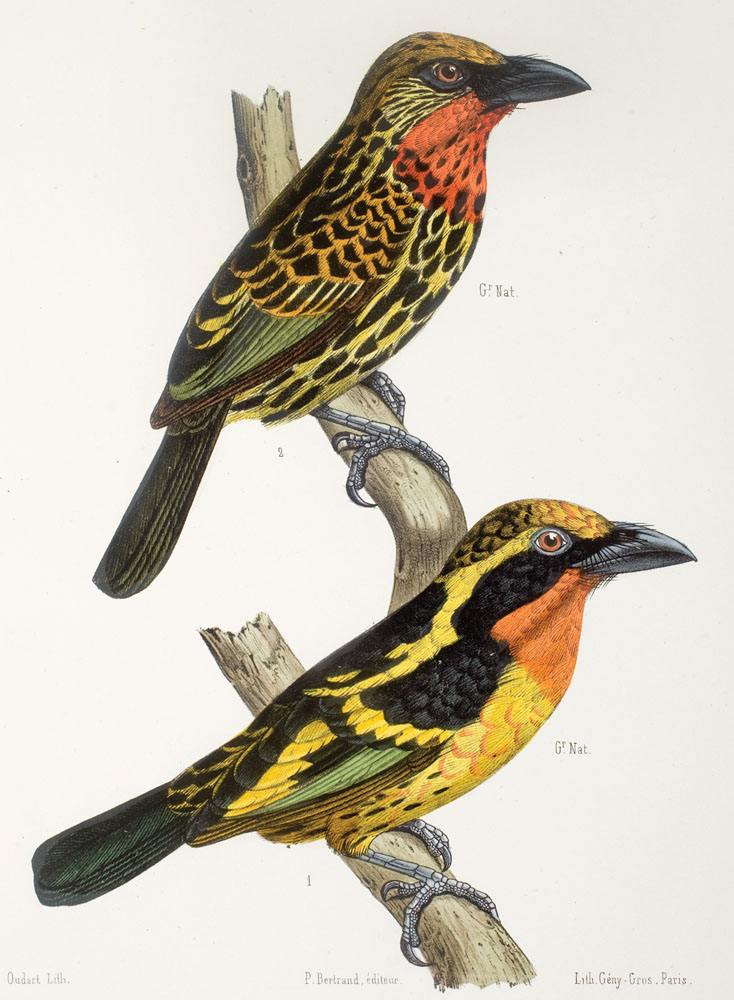
COLLECTING BY INDIVIDUALS
A great many birds fell to guns in the New World in the nineteenth century, and much of the killing was wanton slaughter. Besides the millions of egrets and terns killed to decorate women’s hats, vast numbers of shorebirds and waterfowl were blasted by market gunners, who in their ignorance hunted in spring, when birds were massed in migration just before breeding. On top of that, there was limitless, largely unregulated hunting for sport. In the modern mind, lumped into this devastation is the collecting of birds for science; it is rare to find an avocational birder who does not wince at accounts of collectors of that era who bagged thousands of specimens and bragged about it. For unlike plume and market hunters, who had only a pecuniary stake in the quantity of their take, the men who shot and studied specimens had an abiding professional interest in numbers, and were not shy about publishing their tallies. Thus we know that during his eighteen years in South America, Johann Natterer, the greatest of Neotropical bird collectors in the nineteenth century, sent home precisely 12,293 birds. At first this may seem like a large number, until one recalls that in the early spring of 1821 John James Audubon witnessed crack New Orleans gunners bring down nearly 50,000 American golden plovers in a single day (Audubon 1835, 624).
Before binoculars, before mist nets, before DNA sampling, at a time when many species of birds remained unknown to science, there was simply no way for ornithology to make progress in classifying and understanding the distribution of birds without large numbers of specimens, including extensive series of the same species. Put succinctly, “patterns in nature can be discerned only through the collection of extensive data” (Asma 2001, 72). Some men hunted with enthusiasm, some with a tinge of regret, but no scientist doubted the necessity. As noted before, those who collected did so from a variety of social positions and motivations. There were freelance collectors, either wealthy individuals (such as Wied-Neuwied and Charles Waterton) or less prosperous men who wished to support their own travels and research through the sale of specimens (Henry Walter Bates and Alfred Russel Wallace are two famous examples). Then there were those who were in one way or another in the pay of the government, who collected as part of, or in addition to, their regular duties. Félix de Azara was one such, as were Francis de Laporte and Alcide d’Orbigny. Virtually all of them collected taxa besides birds, everything from ants to large mammals.
Collecting the specimens was only the first step. After that they had to be prepared and preserved from all manner of natural enemies: “[The collector] frequently finds his collections, which he thought quite secure, by being carefully shut up and hung against the wall, destroyed in a single night. Taught by repeated experience, we found the only safe means to be the application of Buffon’s arsenic salve, wrapping the parcels in linen dipped in oil of turpentine, and depositing them in tin cases, which were soldered before they were sent away” (Spix and Martius 1824, vol. 1, 259). Once sent away, there were still the perils of the passage to Europe; Wallace lost almost his entire collection of specimens and notebooks from South America, the fruits of four years of labor, when the ship he was on caught fire and sank in mid-ocean. Mention should also be made of the men who did a great deal of work for very little credit: local residents, usually Indian, who were paid to hunt by European collectors. They were often quite skillful, and, being more familiar with the local habits of birds, highly successful. They go largely unmentioned until the late nineteenth century, when ornithologists began to share a bit of the credit with them. Also, locally owned firms in cities such as Bogotá and Quito began to do a brisk business selling specimens to collectors in Europe. “Bogotá skins,” for example, became a generic name for specimens shipped from that city, “easily recognized by persons who have had experience in such matters, [having] a very different appearance from birds brought from any other country” (P. L. Sclater, quoted in Chapman 1917, 12). The birds were sometimes killed with blowguns, using pellets of clay so as not to damage the bird. The scientific value of these skins is problematic, because they were inadequately labeled and may have been collected at some distance from Bogotá. Nevertheless, “so great has been the supply of the Bogotá skins that no collection of tropical American birds is without a more or less representative series of them” (ibid.).
